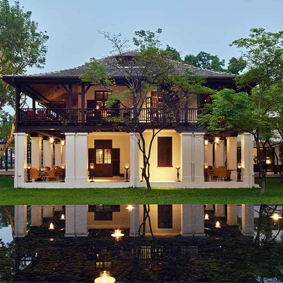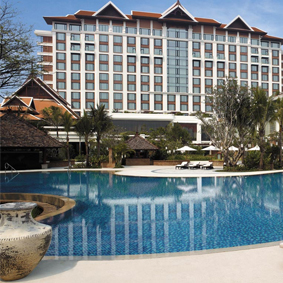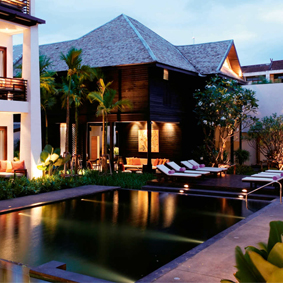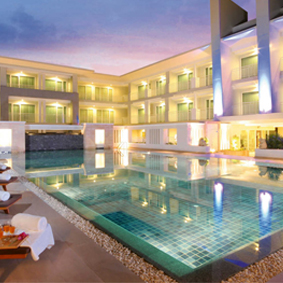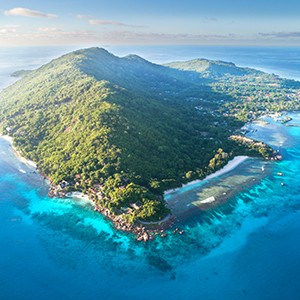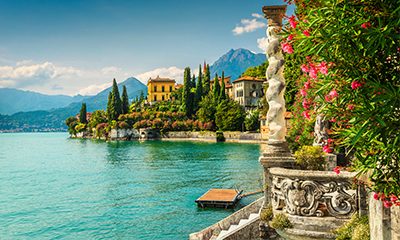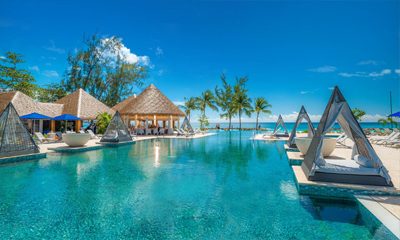OVERVIEW
Situated in the mountainous region of Northern Thailand and surrounded by lush rain forests with numerous tumbling waterfalls, Chiang Mai is a wonderful city with broad leafy avenues and numerous temple spires. The ‘Old City’ is surrounded by a moat and the remains of its ancient city walls and there are numerous bare-footed monks and street traders. This part of Chiang Mai is cultural with religious centres, numerous temples, art galleries, arty cafés and small places to eat traditional dishes.
Chiang Mai meaning ‘New Town’ was founded in 1296 as the capital of the independent Lanna Kingdom and residents still speak the Lanna dialect. Chiang Mai sits on River Ping, a major tributary of the Chao Phraya which has always been an important trading route. Today, the city is divided into four areas; Nakhan Ping, Srivijaya and Mengrai which are all situated on the west bank of the river and Kawala on the east bank.
Getting around Chiang Mai, couldn’t be easier as there are buses, tuk tuk and songthaew – a sort of covered pick up truck. There is plenty that can be enjoyed on foot too. Enjoying the local atmosphere is fun and definitely includes the famous night markets that take place in streets (there is one in Chiang Kian Road every night), squares and in the grounds of temples. The market stalls are full of local arts and crafts and there are many selling traditional street food too including delicious sain yang (marinated grilled chicken), jin dup (marinated beef that has been grilled and then tenderised) and kanom jin – curry and rice noodles. There is a popular market selling silver and handicrafts in Wuala Road on a Saturday and another selling food and handicrafts on a Sunday afternoon.
The Buddhist temples of Chiang Mai are beautiful. Wat Phra That Doi Suthep (1383) is its most famous and sits high on a hill to the northwest of the city, with a 300 step climb. The 14th century Wat Phra Singh and 15th century Wat Chedi Ivong (which is adorned by ornately carved snakes) are also both worth seeing, but there are more than 30 temples in Chiang Mai. For those who want to soak up the local atmosphere there are numerous luxury resorts offering traditional Thai massages. Therefore, for the perfect Thai honeymoon experience, indulge in a soothing Thai massage. Thai cooking is always popular and there is plenty of opportunity to join in an informal class and relax and enjoy your tasty cooking for afterwards. Chiang Mai has a community of excellent artists and designers and for those who are interested there are various classes and workshops as well as their galleries to visit. Other ‘must see’ attractions include the National Museum and Botanical Gardens with its numerous orchids.
If you’re more of an adventurous honeymooner, you may want to explore a little further afield. Doi Inthanon is Thailand’s highest mountain and today stands in its own Natural Park. There is the chance to enjoy many treks into the surrounding countryside – ether on foot or on the back of an elephant – to visit some of the tribal communities such as Akha, Hmong and Lisu. The rainforest can be explored with the opportunity to see the wildlife and a popular way to do this is by zip line between a series of platforms. There are beautiful water falls to explore at Masa and Bua Thong. Another popular destination is the Elephant National Park, which is situated about 50 km from Chiang Mai. Situated in 200 acres, the park cares for rescued elephants and there is the chance to walk and swim with the elephants and to feed them too.
There are great water sports to enjoy in and around Chiang Mai including white water rafting on the Mae Taeng, kayaking and stand up paddle boarding. A popular way to get around is by bicycle. For those who want to buy a traditional souvenir there are workshops where beautiful paper umbrellas are hand painted, wooden handicrafts and silver jewellery is created by hand.
Food is always an important part of any trip and those visiting Chiang Mai will be surprised and delighted by the local cuisine. Thai food in this region is very different from the dishes known and loved by many and is surprisingly different even from Bangkok cuisine. The food is very seasonal (Chiang Mai has three distinct seasons) and varied as the area enjoys a relatively cool climate and not as spicy. The most famous of Chiang Mai’s dishes is kôw soy which is a bowl of egg noodles in curry broth which is traditionally eaten with a squeeze of fresh lime.
What is the currency in Chiang Mai?
The currency in Bangkok is Thai Baht.
How long does it take to fly to Chiang Mai?
International flights are to Bangkok (11.5 hours) and from there an internal flight to Chiang Mai are surprisingly cheap. There are trains from Bangkok to Chiang Mai (12 hours overnight), buses and taxis.
What is the time difference in Chiang Mai?
GMT 6 hours ahead
What language is spoken in Chiang Mai?
Lanna (Northern Thai) is the language spoken in Chang Mai. English is widely spoken in hotels and travel businesses.
Should I tip in Chiang Mai?
If a service charge hasn’t been added to your restaurant bill, a tip of 10-15% will be appreciated. Tip porters and hotel staff if you are happy with their service.
When is the best time to visit Chiang Mai?
November to March is the best time to visit Chang Mai. January is usually the best month of all with temperatures around 25°C. The first weekend in February sees the three day Chiang Mai Flower Festival when the tropical flowers are in full bloom. Many people visit for the five day water festival of Song kran in April which marks the Thai New Year.
Do I need a visa to travel to Chiang Mai?
You will only need a visa if you’re staying more than 30 days. Visas are obtainable from the Thai Embassy. For up-to-date information on travel requirements to Thailand visit the official FCO website here.


